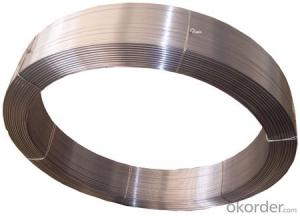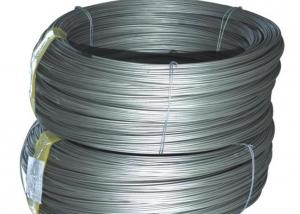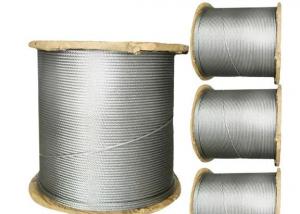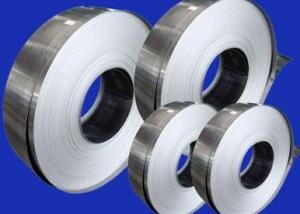Rebar Coil Wire Rod 5.5mm-14mm for Building Structure
- Loading Port:
- Tianjin
- Payment Terms:
- TT or LC
- Min Order Qty:
- 100 m.t.
- Supply Capability:
- 1000 m.t./month
OKorder Service Pledge
OKorder Financial Service
You Might Also Like
Rebar Coil Wire Rod 5.5mm-14mm for Building Structure
Main Structure of Rebar Coil Wire Rod
Standard: AISI, ASTM, BS, DIN, GB
Grade: HRB400
Diameter: 5.5mm-10mm
steel grade: hrb400 , hrb500, gr.60 , hrb335,q235 q255 q275
weight: 1.6-1.9ton /coil
packing: by coil with steel wire
application: building construction
Description for Rebar Coil Wire Rod
Type | rebar coil wire rod |
Steel Grade | Hrb400 , hrb500, gr.60 ,q235 ,q255,q275,sae1006,sae1008 |
Your required chemical composition. | |
Size | 5.5mm-10mm |
Unit weight | 1.6-1.9tons/coil |
Application | Building/project construction |
Packing | In coil with steel strip ,in bulk . |
MOQ | 1000tons(500for trial order ). |
Delivery Time | 25days . |
Payment | T/T , West Union , Cash , L/C. |
Trade Terms | FOB, CFR, CIF ,EXW |
Trans terms | FIO FILO FLT |
Loading port | Caofeidian /Jingtang/Tianjin,China |
Data of Chemical Composition for Wire Rod
Content | C% | Mn% | Si% | Cr% | Ni% | S% | P% | Cr% |
HRB400 | 0.14-0.22 | 0.40-0.65 | 0.05-0.15 | 0.30max | 0.30max | 0.050 | 0.040 | 0.30min |
HRB400E | 0.14-0.22 | 0.40-0.65 | 0.15-0.30 | 0.30max | 0.30max | 0.050 | 0.040 | 0.30min |
HRB500 | 0.28-0.37 | 0.50-1.00 | 0.05-0.15 | 0.30max | 0.30max | 0.050 | 0.040 | 0.30min |
HRB500E | 0.28-0.37 | 0.50-1.00 | 0.15-0.30 | 0.30max | 0.30max | 0.050 | 0.040 | 0.30min |
FAQ
Why should you choose us:
Stable quality ----continous casting hot rolled production techenic, strictly quality control system.
Lower price -------Not the cheapest but the lowest price at the same quality .
Good service -----Satisfactory service within 24hours.
Delivery time ------15-25days for the mass production .
Discount---------------discount base on monthly large quantity purchase in long term.
Picture


- Q:0.1mm stainless steel wire how butt welding, what equipment is more solid welding?
- Buy a touch welding machine on the line, and 1 of them can be welded together, 0.1 of the certainly no problem.
- Q:Can stainless steel wire brushes be used for cleaning bathroom fixtures?
- Indeed, bathroom fixtures can be effectively cleaned using stainless steel wire brushes. These brushes possess durability and powerful bristles that excel at eliminating dirt, grime, and mineral deposits from fixtures like faucets, showerheads, and drains. Nevertheless, it is crucial to select the suitable size and bristle stiffness for each fixture to prevent any scratching or surface damage. Moreover, it is advised to test the brush on a small, inconspicuous area prior to extensive usage to verify its harmlessness.
- Q:How about 3 mm diameter stainless steel wire welding?
- After all bending, use resistance welding, also known as contact welding. If it is made of a single piece, use gas protection to weld the solder joint.
- Q:Is stainless steel wire suitable for wire rope fittings?
- Indeed, stainless steel wire proves to be fitting for wire rope fittings. Renowned for its robustness, endurance, and resistance to corrosion, stainless steel wire stands as an exceptional option for withstanding hefty burdens and adverse environmental circumstances that wire rope fittings encounter. Moreover, stainless steel wire rope fittings present exceptional flexibility, facilitating effortless installation and adjustment. Furthermore, stainless steel wire finds frequent usage in domains where sanitation and cleanliness hold significance, such as the food and medical industries. In conclusion, stainless steel wire emerges as a dependable and appropriate material for wire rope fittings.
- Q:Is stainless steel wire suitable for wire rope tensioners?
- Yes, stainless steel wire is suitable for wire rope tensioners. Stainless steel is known for its excellent strength and corrosion resistance, making it an ideal choice for applications where tension and durability are required. Additionally, stainless steel wire is resistant to rust and can withstand harsh environmental conditions, making it a reliable option for wire rope tensioners.
- Q:What are the different wire forming techniques used for stainless steel wire?
- Stainless steel wire can be shaped into different forms and structures using various wire forming techniques. These techniques serve different purposes and are commonly employed in different applications. One commonly used technique is wire drawing. This involves reducing the diameter of the stainless steel wire by pulling it through a series of dies. Besides achieving the desired diameter, this process also enhances the wire's mechanical properties and surface finish. Another technique is wire bending, which involves bending or curving the stainless steel wire into specific shapes. This can be done manually with hand tools or through automated bending machines. Wire bending finds applications in springs, hooks, and wire forms. Wire coiling is yet another technique used for stainless steel wire. It involves winding the wire around a mandrel or cylindrical object to create coils of various sizes and shapes. Coiling is commonly used in springs, electrical contacts, and jewelry. Wire welding is an essential technique for stainless steel wire. TIG or MIG welding methods are used to join stainless steel wires together or attach them to other components. This technique is widely used in fabricating wire mesh, wire baskets, and other wire-based structures. Lastly, wire mesh weaving is a specialized technique for creating stainless steel wire mesh. Multiple wires are interlaced in a crisscross pattern to form a mesh with specific mesh sizes and patterns. Wire mesh is commonly used in filtration, sieving, and screening applications. In conclusion, these wire forming techniques provide a wide range of options for shaping stainless steel wire, enabling its use in various industries and applications.
- Q:Can stainless steel wire be used for wire jewelry making?
- Yes, stainless steel wire can be used for wire jewelry making. It is a popular choice among jewelry makers due to its durability, strength, and resistance to tarnish. Stainless steel wire allows for creating intricate and long-lasting designs for various types of jewelry, including bracelets, necklaces, and earrings.
- Q:Can stainless steel wire be used for making wire traps?
- Yes, stainless steel wire can be used for making wire traps. Stainless steel is a durable and corrosion-resistant material that can withstand the elements and repeated use. It provides strength and flexibility, making it suitable for constructing effective wire traps for various purposes.
- Q:What are the different types of stainless steel wire rope?
- There are several types of stainless steel wire rope, including 1x19, 7x7, and 7x19 constructions. The 1x19 is a rigid and strong rope, suitable for structural and architectural applications. The 7x7 is more flexible and commonly used for general-purpose applications such as cable railing and garage doors. The 7x19 is the most flexible and commonly used for lifting and rigging applications due to its higher strength and resistance to fatigue.
- Q:What are the different types of stainless steel wire braiding techniques?
- There are several types of stainless steel wire braiding techniques, including standard braiding, interlocked braiding, and braid-over-braid. Each technique has its own unique characteristics and is used for different applications. Standard braiding involves weaving multiple strands of wire together in a regular pattern, providing flexibility and strength. Interlocked braiding uses an interlocking pattern to create a more rigid and durable braid. Braid-over-braid involves braiding a smaller braid over a larger one, providing enhanced strength and protection. These techniques offer various options for manufacturers and users to select the most suitable method for their specific needs.
1. Manufacturer Overview |
|
|---|---|
| Location | |
| Year Established | |
| Annual Output Value | |
| Main Markets | |
| Company Certifications | |
2. Manufacturer Certificates |
|
|---|---|
| a) Certification Name | |
| Range | |
| Reference | |
| Validity Period | |
3. Manufacturer Capability |
|
|---|---|
| a)Trade Capacity | |
| Nearest Port | |
| Export Percentage | |
| No.of Employees in Trade Department | |
| Language Spoken: | |
| b)Factory Information | |
| Factory Size: | |
| No. of Production Lines | |
| Contract Manufacturing | |
| Product Price Range | |
Send your message to us
Rebar Coil Wire Rod 5.5mm-14mm for Building Structure
- Loading Port:
- Tianjin
- Payment Terms:
- TT or LC
- Min Order Qty:
- 100 m.t.
- Supply Capability:
- 1000 m.t./month
OKorder Service Pledge
OKorder Financial Service
Similar products
New products
Hot products
Related keywords



























